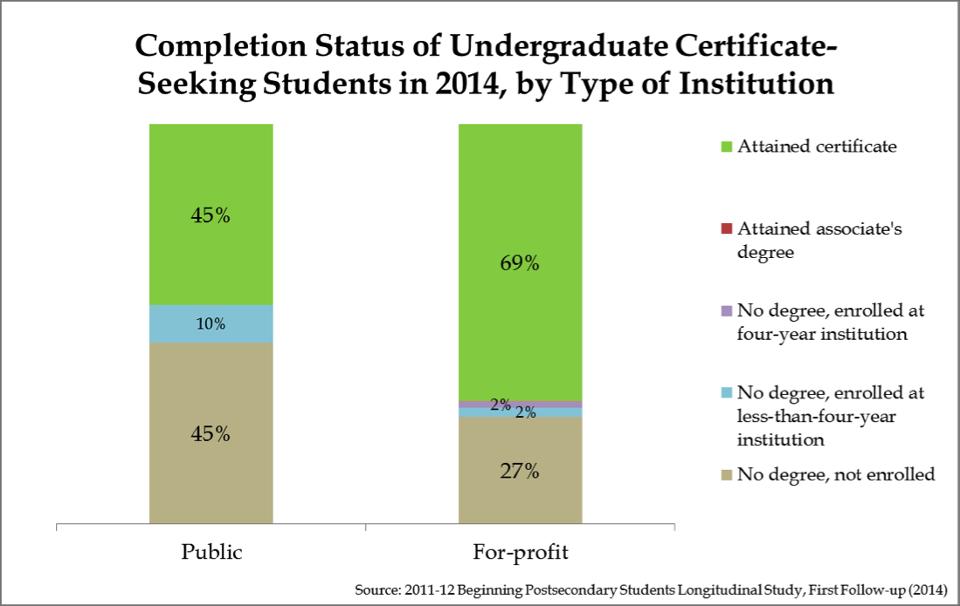
Public Colleges Aren’t A Better Bet Than For-Profits
The Department of Education has released new data on the earnings of graduates from career college programs as part of the implementation of its “gainful employment” (GE) rule. The rule, which went into effect last year, requires colleges that receive federal funding to ensure their graduates have high earnings relative to the student debt they have accumulated. The rule applies to all for-profit colleges and to certificate programs at colleges in any sector, public or private.
In its press release, the Department of Education touts the $9,000 gap between the average earnings of graduates of public and for-profit career college programs with the assertion “public colleges pay off.” This data point will certainly be deployed to justify the Department’s uneven regulatory strategy, wherein for-profit colleges receive much tougher scrutiny than their peers in the private nonprofit and public sectors. But the earnings gap only tells part of the story.
The following graph, which focuses only on undergraduate certificate programs for simplicity’s sake, shows wide variation in graduate earnings within both the public and for-profit sectors.

The earnings gap doesn’t tell the whole story.
There are plenty of public schools which are worse than the average for-profit, and many for-profits which outperform the average public institution. Painting either sector with a broad brush is inappropriate.
More importantly, the earnings data only refer to graduates. (When I contacted the Department of Education, a spokesman told me that they were barred from releasing data on the earnings of dropouts.) Defenders of the Department’s regulatory strategy can only make a case that public colleges “pay off” for those who manage to graduate. For public colleges, graduates are a minority.
According to the Beginning Postsecondary Students Longitudinal Study, only 45% of certificate-seeking students at public colleges had attained their credential three years later. However, this attainment rate was nearly 70% for comparable programs at for-profit colleges. That is a 25-point gap in favor of for-profits.

For-profit colleges are the worst, except for all the others.
In short, these data points suggest that there is a tradeoff between public and for-profit colleges, rather than one or the other being objectively better. At a public college, you’ll collect higher earnings if you manage to graduate. At a for-profit, you’ll probably graduate, but you’ll also end up with lower earnings.
